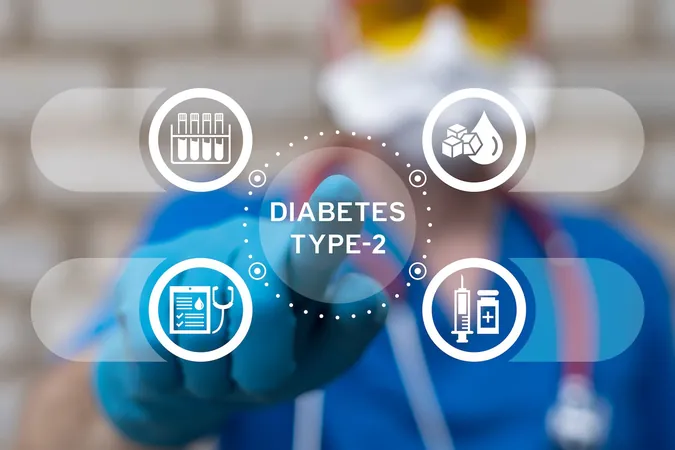
Shocking New Study Reveals High Treatment Failure Rates Among Type 2 Diabetes Patients on SGLT2 Inhibitors
2025-09-21
Author: Wei Ling
Alarming Statistics on Treatment Failures
Recent research published in *Diabetes & Metabolic Syndrome* has unveiled startling findings regarding the treatment of adults battling type 2 diabetes (T2D) with sodium-glucose cotransporter 2 inhibitors (SGLT2is). The study highlights a concerning trend of treatment failure among this demographic, emphasizing the urgent need for improved strategies in managing SGLT2i therapies.
The Benefits Versus the Burdens
SGLT2is have been heralded for their ability to lower blood glucose levels by inhibiting glucose reabsorption in the kidneys. Notable trials have confirmed their effectiveness in controlling blood sugar and reducing risks related to cardiovascular issues and kidney disease. However, these benefits come with significant downsides, leading to high instances of treatment discontinuation.
Common Adverse Effects Cause Major Disruptions
Patients using SGLT2 inhibitors frequently report adverse reactions such as urinary tract infections, increased urination, nausea, and constipation. More severe complications can arise, including diabetic ketoacidosis and urinary infections that can escalate to kidney issues and other life-threatening conditions.
High Rate of Treatment Failure Identified
In an extensive observational study that analyzed the medical records of over 237,000 T2D patients, researchers found that an alarming 77.3% experienced treatment failure within just over 9 months of starting SGLT2i therapy. This included discontinuation of the medication, switching to alternative treatments, or failing to take any corrective action despite uncontrolled blood sugar levels.
Demographics at Risk for Treatment Failure
The study identified specific risk factors contributing to treatment failure, including age (particularly patients over 74), gender (with women showing higher failure rates), and racial demographics (notably Black individuals). Additionally, those with comorbid health conditions such as hypertension and mental health issues were at increased risk.
A Call for Improved Management Strategies
Researchers urge for a more tailored approach to prescribing SGLT2is, advocating for thorough evaluations of patient risks and proactive management of potential side effects. They recommend better integration of combination therapies to prevent the pitfalls associated with monotherapy.
Conclusion: A Critical Need for Action
This study casts a spotlight on the significant unmet needs of T2D patients using SGLT2 inhibitors, urging clinicians to rethink their strategies in order to enhance adherence and ultimately improve patient outcomes. As treatment failure rates soar, it becomes crucial for healthcare providers to address the myriad factors contributing to these alarming statistics.





 Brasil (PT)
Brasil (PT)
 Canada (EN)
Canada (EN)
 Chile (ES)
Chile (ES)
 Česko (CS)
Česko (CS)
 대한민국 (KO)
대한민국 (KO)
 España (ES)
España (ES)
 France (FR)
France (FR)
 Hong Kong (EN)
Hong Kong (EN)
 Italia (IT)
Italia (IT)
 日本 (JA)
日本 (JA)
 Magyarország (HU)
Magyarország (HU)
 Norge (NO)
Norge (NO)
 Polska (PL)
Polska (PL)
 Schweiz (DE)
Schweiz (DE)
 Singapore (EN)
Singapore (EN)
 Sverige (SV)
Sverige (SV)
 Suomi (FI)
Suomi (FI)
 Türkiye (TR)
Türkiye (TR)
 الإمارات العربية المتحدة (AR)
الإمارات العربية المتحدة (AR)